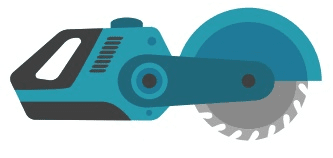20 Things You Need To Know About Cross Cut Mitre Saw

The Complete Guide to Cross Cut Mitre Saws
In the world of woodworking and construction, a cross cut mitre saw is a vital tool that adds precision and flexibility to any task. Created to make clean, precise cuts at numerous angles, this power tool is a preferred among both amateur enthusiasts and professional carpenters alike. With a vast array of features, designs, and specifications, comprehending the complexities of cross cut mitre saws can substantially boost your woodworking abilities.
What is a Cross Cut Mitre Saw?
A cross cut mitre saw, frequently referred to as a mitre saw, is a fixed power tool that enables users to make precise cross cuts and mitre cuts in wood and other materials. The saw features a circular blade that is installed on a rotating arm. The arm can be reduced to slice through the product at an angle, providing a versatile cutting ability.
Secret Features of a Cross Cut Mitre Saw
- Blade Size: Common sizes consist of 10-inch and 12-inch blades. The size of the blade impacts the depth and width of cuts.
- Mitre Angles: Most mitre saws have predetermined angles ranging from 0 ° to 45 °, enabling different mitre cuts.
- Bevel Function: Some saws include a bevel function to make compound cuts. This feature can tilt the blade side-to-side.
- Laser Guide: Laser markers assist provide accuracy in cutting by predicting a line that indicates where the cut will take place.
- Dust Collection: An efficient dust collection system helps keep the workspace tidy and enhances presence.
Various Types of Mitre Saws
- Standard Mitre Saw: Ideal for simple crosscuts at particular angles.
- Compound Mitre Saw: Capable of making both mitre and bevel cuts, providing more versatility.
- Sliding Compound Mitre Saw: An advanced choice that features a sliding arm, permitting for broader cuts.
| Type | Performance | Best For |
|---|---|---|
| Standard Mitre Saw | Easy crosscuts and mitre cuts | Beginners and easy tasks |
| Compound Mitre Saw | Mitre and bevel cuts | More advanced tasks |
| Sliding Compound Mitre Saw | Wider cuts due to the sliding feature, mitre and bevel cuts | Professionals |
Benefits of Using a Cross Cut Mitre Saw
- Precision: Mitre saws supply precise cuts that can boost the quality of any woodworking task.
- Versatility: With the ability to make mitre and bevel cuts, the series of applications is comprehensive-- from image frames to detailed furnishings designs.
- Speed: Mitre saws enable quick setups and fast cutting, which is particularly advantageous in professional settings.
- Relieve of Use: Most designs are easy to use, making them appropriate for both beginners and skilled artisans.
How to Choose the Right Cross Cut Mitre Saw
When picking a mitre saw, a number of factors ought to be taken into factor to consider to guarantee it satisfies the user's requirements:
1. Blade Size
- Think about the size of the products you'll be working with. For bigger tasks, a 12-inch blade might be more appropriate.
2. Horse power
- Greater horsepower usually suggests higher power and the capability to cut through denser products.
3. Dust Management
- Consider designs with efficient dust collection systems for cleaner work environments.
4. User Reviews
- Research customer evaluates to learn more about the efficiency and reliability of different brand names and models.
5. Portability
- Decide if you need a lightweight, portable design or a much heavier, more effective fixed system.
Best Practices for Using a Cross Cut Mitre Saw
Using a mitre saw safely and efficiently includes sticking to a number of best practices:
- Always use personal protective devices (PPE) such as safety glasses and ear security.
- Protect the material before cutting to avoid motion that can lead to errors or injury.
- Double-check measurements and settings before making cuts.
- Keep the work location tidy to decrease threats and improve visibility.
- Find out and practice safe cutting methods to decrease the threat of accidents.
FAQs about Cross Cut Mitre Saws
Q1: What materials can I cut with a mitre saw?A: Mitre saws are
developed mainly for wood, however they can also cut through plastics and some soft metals. Constantly examine the requirements of your saw to verify compatibility with various materials. Q2: How typically should I alter the blade on my
mitre saw?A: The frequency of blade modifications depends on use. If you see decreased efficiency or irregular cuts, it's time to change the blade. Usually, Mitre Saws UK will last for numerous months with regular use. Q3: Can I utilize my mitre saw for rip cuts?A: No, mitre saws are not designed for rip
cuts. Use a table saw for making rip
cuts along the grain of the lumber. Q4: How do I preserve my cross cut mitre saw?A: Regularly clean your saw, look for loose screws, and lubricatemoving parts based on the manufacturer's directions
. This will make sure optimal performance and durability. Q5: Is a sliding compound mitre saw worth the investment?A: If your jobs need wider cuts and higher flexibility, a sliding compound design is
worth the financial investment. They offer enhanced capabilities, however if you only need standard cuts, a standard mitre saw will be sufficient. A cross cut mitre saw is an important tool for woodworking and construction projects, delivering precision, effectiveness, and versatility. Understanding the various functions, types, and best
practices associated with these saws will allow users to maximize their capabilities and produce high-quality outcomes. By thinking about the best specs and maintaining appropriate use practices, anybody can master this power tool and elevate their workmanship to the next level.

